#frank ormsby
Text
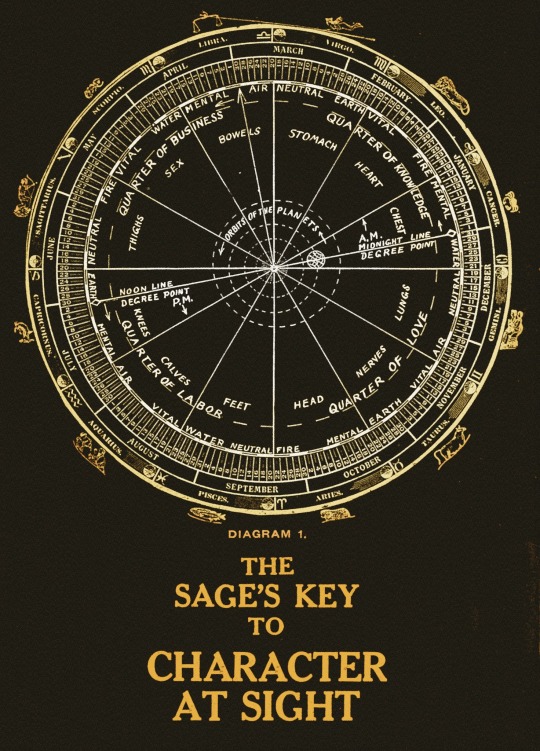
The Sage's Key to Character at Sight
From The Sage's Key to Character At Sight by Frank Earl Ormsby, 1919.

The planets' places on the face.
From The Influence of the Stars by Rosa Baughan, 1891.
12 notes
·
View notes
Text
“Can we get him out?”




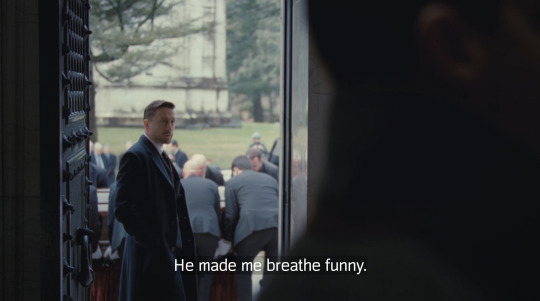
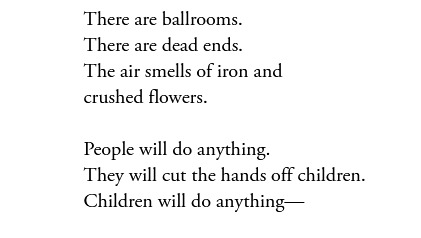
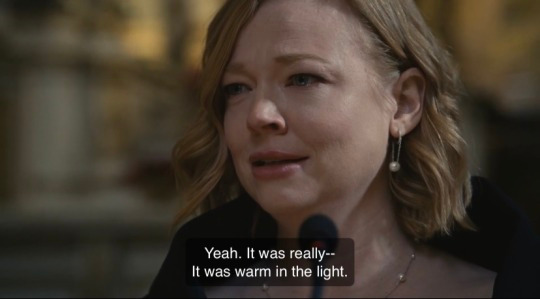
Succession 4.09 Church and State I For Weeks After the Funeral by Andrea Hollander I My Father’s Funeral by Frank Ormsby I Origins of Violence by Jenny George
20 notes
·
View notes
Text
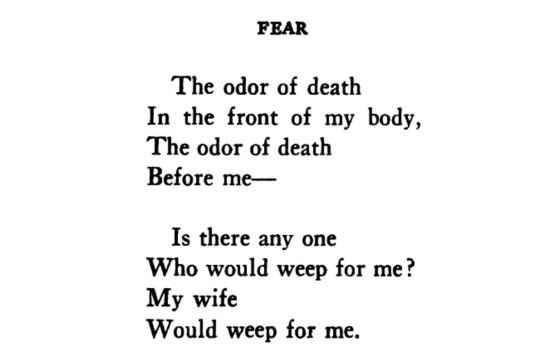


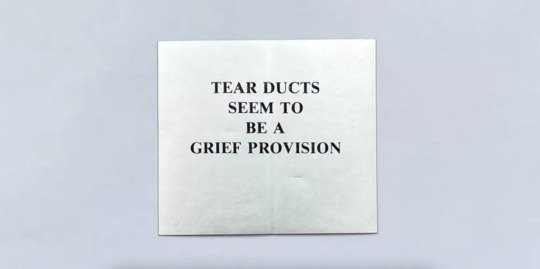


i've been exploring stuff on grief.
alice corbin henderson / william penn / mary oliver / anne carson / kafka / frank ormsby / jenny holzer / deborah h. miranda / naomi shihab nye
19 notes
·
View notes
Text

—Faye Webster, Hurts Me Too

—Dan Gerber, My Father's Fields


—Sylvia Plath, The Unbridged Journals Of Sylvia Plath
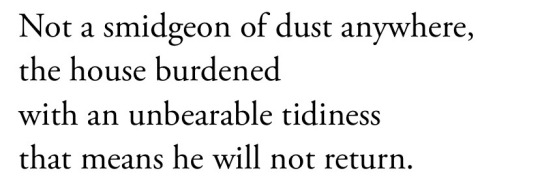
—My Father's Funeral, Frank Ormsby

—Unknown


—Taylor Swift, Tolerate It
#fathers day#fathers#fathers and daughters#father and daughter#fathers and sons#mother's day#mothers#parents#absent fathers#father#happy father's day#happy fathers day#that's it#dark academia
41 notes
·
View notes
Text
"Where I green up
the fields had names,
The Brown Ground, The Brick-tile,
The Moss Bottom.
Earthed, each one,
in our practical affections."
Frank Ormsby, "the Fields"
1 note
·
View note
Text




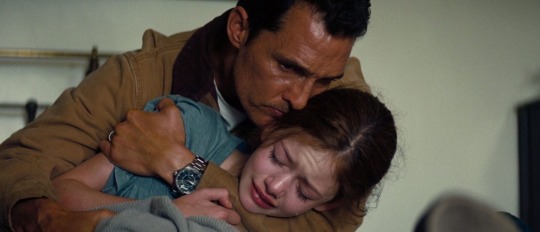

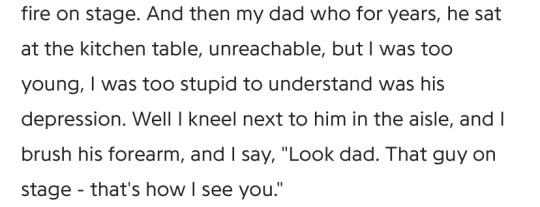



on fathers ; things i’ve collected here, and other places on the internet
topaz winters, war story with my father // sylvia plath, the unabridged journals of sylvia plath // fatherland, eloise robinson // mary ruefle, trances of the blast // interstellar (2014) // unknown(?)/still searching // bruce springsteen - my fathers house (springsteen on broadway) // my father’s fields, dan gerber // parasite (2019) // my fathers funeral, frank ormsby
#if u know who wrote that one pls tell me lol#this is so messy ugh idk if this works#anyway lol#parallels#poetry#film#words#art#fathers#mothers#web weaving#topaz winters#sylvia plath#eloise robinson#mary ruefle#interstellar#bruce springsteen#dan gerber#parasite#frank ormsby
2K notes
·
View notes
Photo

frank ormsby, “moving in”
52 notes
·
View notes
Text
Evening Poetry, June 25
Evening Poetry, June 25
Fireflies
by Frank Ormsby
The lights come on and stay on under the trees.
Visibly a whole neighborhood inhabits the dusk,
so punctual and in place it seems to deny
dark its dominion. Nothing will go astray,
the porch lamps promise. Sudden, as though a match
failed to ignite at the foot of the garden, the first squibs
trouble the eye. Impossible not to share
that sportive, abortive, clumsy,…
View On WordPress
2 notes
·
View notes
Quote
One more butterfly in the butterfly house
will count as overcrowding. Sun all morning
and the heaviness of piped heat
draws hundreds to the surface. They spend their days
being exquisite in a history without wars. We are able,
briefly, to forget the scaly intent,
the cold-skinned slither a hundred yards away
in the tropical ravine. Hold up your arm
and with luck you will emerge into the garden,
badged and sleeved with butterflies,
a thousand bright sails opening around you.
by Frank Ormsby
[read & listen at newyorker.com]
1 note
·
View note
Photo



"The law and the prophets." A scientific work on the relationship between physical bodies, vegetable, animal, human and planetary ..
by Ormsby, Frank Earl.
c.1893
9 notes
·
View notes
Text
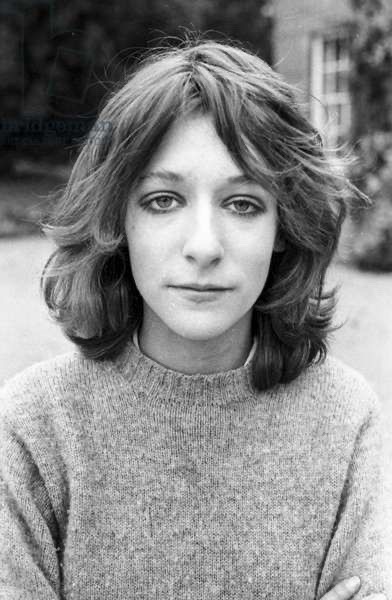
Alice Ormsby-Gore at her home in Oswestry, Shropshire. Photographed by Julian Lloyd. circa 1968 / 1969.
#alice ormsby gore#julian lloyd#1968#1969#julian said this portrait was taken in 1969 but alice had longer hair bu then#im positive its 1968#frank has a portrait that was taken in 68#it makes more sense imo#anways
10 notes
·
View notes
Photo



From Maximum Swing tumblr blog: “Girl at Rolling Stones concert” is probably one of the most iconic images from the late sixties, but we never really had a name. Until now. I was researching something Marianne Faithfull related when I came across an article [Sunday Mirror Page, Published 6th July 1969] about the Stones’ free concert in Hyde Park, London in 1969. It has a shot of this girl and the caption reads: “Hats off to teenage fashion … as displayed by the eye-catching sequins worn by Pamela Donaldson (…)”.
Photo by Frank Habicht, 1969.
So she’s not Charlotte Martin neither Alice Ormsby-Gore.
#Girl at a Rolling Stones concert#Pamela Donaldson#Frank Habicht#1969#rolling stone australia#Hyde Park#1960s#marianne faithfull#Brian Jones#Not Charlotte Martin#Not Alice Ormsby Gore
118 notes
·
View notes
Text
Books I read in 2019
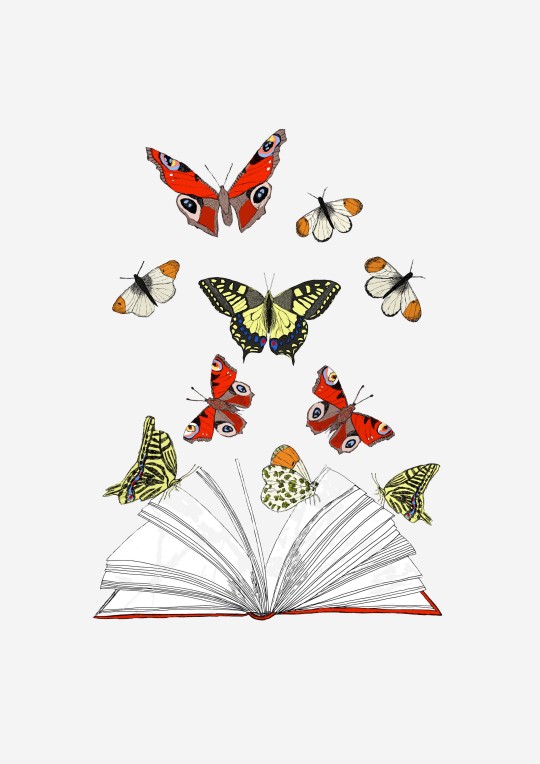
Here are the books I read in 2019; links go through to the posts I wrote about each one. I still haven’t finished Finnegans Wake (which I started in 2018), although I did write a little post about it for The Quietus. Also, I still need to finish The Age of Surveillance Capitalism. For the most important book of our generation, it could be a bit shorter!
Toy Fabels – Cass McCombs
Jake’s Thing – Kingsley Amis
The Topeka School – Ben Lerner
American Primitive – Mary Oliver
The Hawk in the Rain – Ted Hughes
The Age of Surveillance Capitalism – Shoshana Zuboff
The Crystal Prison – Robin Jarvis
Waking Up in Toytown – John Burnside
Childhood – Tove Ditlevsen
Usborne’s World of the Unknown: Ghosts
Lanny – Max Porter
My Year of Rest and Relaxation – Ottessa Moshfegh
Perfect Sound Whatever – James Acaster
On Earth We’re Briefly Gorgeous – Ocean Vuong
Selected Poems – Norman Nicholson
Hark – Sam Lipsyte
Sweet Sorrow – David Nicholls
Trick Mirror – Jia Tolentino
Plume – Will Wiles
On Chapel Sands – Laura Cumming
81 Austerities – Sam Riviere
Gunpowder – Bernard O’Donoghue
Riddley Walker – Russell Hoban
‘Broadsword Calling Danny Boy’ – Geoff Dyer
Surprisingly Down to Earth, and Very Funny – Limmy
Out of the Woods – Luke Turner
Social Creature – Tara Isabella Burton
Exposure – Olivia Sudjic
Folk – Zoe Gilbert
Kingdomland – Rachael Allen
The Woman in the Dunes – Kobo Abe
Outline – Rachel Cusk
The Built Moment – Lavinia Greenlaw
Selected Poems – W. S. Graham
The Adulterants – Joe Dunthorne
Hera Lindsay Bird – Hera Lindsay Bird
Fearless: The Making of Post-Rock – Jeanette Leech
The Wasp Factory – Iain Banks
I particularly enjoyed Lanny, Trick Mirror, Plume and Limmy’s autobiography (although please listen to the audiobook). Riddley Walker is a book that will stay with me forever, and that I hope to return to again and again.
My Dad died this year, and reading poetry has been a great solace. As a tribute to Dad, I put together a commemorative booklet to send out to friends and family and included a number of our favourite poems. One of the poems was ‘Going Without Saying’ by Bernard O’Donoghue:
Going Without Saying
It is a great pity we don’t know
When the dead are going to die
So that, over a last companionable
Drink, we could tell them
How much we liked them.
Happy the man who, dying, can
Place his hand on his heart and say:
‘At least I didn’t neglect to tell
The thrush how beautifully she sings.’
Another poem I included was ‘The Butterfly House’ by Frank Ormsby, the inspiration for the cover (see above) which was designed by Louise Boulter. The poem ends:
… with luck you will emerge into the garden,
badged and sleeved with butterflies,
a thousand bright sails opening around you.
4 notes
·
View notes
Text
Lawn bowls - Hall of Famers of Australia

Bowls or lawn bowls is a sport in which the objective is to roll biased balls so that they stop close to a smaller ball called a "jack" or "kitty". It is played on a bowling green which may be flat or convex or uneven. It is normally played outdoors and the outdoor surface is either natural grass, artificial turf, or cotula.
John Dobbie

John Dobbie was an Australian international lawn bowler. John was born in 1914. Dobbie started bowling in 1934 for the Glenferrie Hill Bowls Club.
His father was Frank Dobbie who won the 1927 & 1931 singles titles at the Australian National Bowls Championships when bowling for the City of Camberwell Bowls Club. John competed in the first World Bowls Championship in Kyeemagh, New South Wales, Australia in 1966 and won a gold medal in the triples with Don Collins and Athol Johnston and a silver in the fours. He also won a gold medal in the team event (Leonard Trophy).
He was club champion 11 times of which his first win in 1947 was against his father in the final.
Norma Massey

Norma Massey is a former international lawn bowls competitor for Australia. Massey was born in 1924. Massey won the singles bronze medal and triples silver medal with Connie Hicks and Mary Ormsby, at the 1969 World Outdoor Bowls Championship in Sydney and also won a silver medal in the team event (Taylor Trophy).
Eight years later she represented Australia in the singles and triples events finishing just outside the medals but was part of the team that claimed the gold medal in the team event (Taylor Trophy). Sixteen years after her first World Championships she won the triples gold medal with Dorothy Roche and Mavis Meadowcroft, the fours silver medal with Meadowcroft, Roche and Fay Craig and the team event gold medal at the 1985 World Outdoor Bowls Championship in Melbourne.
Massey was awarded the Order of Australia for services to bowls in 2006. In 2011 she was inducted into Bowls Australia’s Hall of Fame.
Keith Poole

Keith Poole was an Australian international lawn bowler. Poole was born in 1927. Poole won a silver medal in the fours with Don Woolnough, Leigh Bishop and Barry Salter and a bronze medal in the team event (Leonard Cup) at the 1976 World Outdoor Bowls Championship in Johannesburg. He also won a silver medal in the team event four years later.
Poole won a silver medal as part of the fours team with Robert King, Errol Bungey and Errol Stewart at the 1974 British Commonwealth Games in Christchurch, New Zealand. Eight years later he skipped the four to a gold medal success in the 1982 Commonwealth Games in Brisbane. The gold medal winning team was Poole, Rob Dobbins, Bert Sharp and Don Sherman. He was an accountant by trade and was inducted into the Australian Hall of Fame.
Take care of your costume and your confidence will take care of itself. Avoid injuries by dressing well.
Colorup Uniforms provide the best quality lawn bowl wears online.
We are the specialist in creating high quality Custom made Lawn Ball Jerseys.
Businesses, schools, and social organisations trust us to provide the Best Lawn Ball Polos.
Our Comfortable Lawn Ball Pants are specially designed to bring team spirit for whatever type of lawn ball team you play.
Our Custom Sports Apparels in Australia gives you the luxury and durability you need for your games. Sleek and stretch resistance are going to give you and your entire team the kind of presence on the field.
To give our customers more creative input in Team Uniform Design we have incorporated the Online Kit Builder into our website that allows you to create the Best Team Uniform Design online in Australia.
You can design your own Jerseys with the desired colour, team logos, name, number.
Custom made Lawn Ball Jerseys are made with high-quality fabric which gives you a cool, smoother and comfortable feel.
Your team will love their professional-grade Custom Lawn Ball Uniforms, Custom Lawn Ball Polos, Custom Lawn Ball Team Jerseys and other Lawn Ball Clothings that will make them feel like they stepped into the major leagues.
Explore the categories below to find one of the Best Custom Made Law Bowl Uniforms Online.
Categories:
Design Your Own Custom Lawn Ball Apparel
Design Your Own Custom Mens Lawn Ball Polos
Design Your Own Custom Mens Long Sleeve Polos
Design Your Own Custom Mens Lawn Ball Jerseys
Design Your Own Custom Mens Long Sleeve Jerseys
Design Your Own Custom Mens Jacket
Design Your Own Custom Ladies Lawn Ball Polos
Design Your Own Custom Ladies Long Sleeve Polos
Design Your Own Custom Ladies Lawn Ball Jerseys
Design Your Own Custom Ladies Long Sleeve Jerseys
Design Your Own Custom Ladies Jacket
Design Your Own Custom Lawn Ball Pants
Design Your Own Custom Lawn Ball Shirts
Design Your Own Custom Lawn Ball Uniforms
Reference:
https://en.wikipedia.org/wiki/John_Dobbie_(bowls)
https://en.wikipedia.org/wiki/Norma_Massey
https://en.wikipedia.org/wiki/Keith_Poole_(bowls)
#customlawnballwears#customlawnballuniforms#customlawnballjerseys#customlawnballpolos#customlawnballpants#customlawnballjackets#customlawnballshirts#customlawnballapparels#customlawnballhoodies#customlongleevepolos#customlongsleevejerseys#customsportswear#customsportsjacket#customsportsjerseys#customsportsclothing#customsportsuniforms#customsportspolos
0 notes
Text
A century ago, astronomy’s Great Debate foreshadowed today’s view of the universe
Counting universes ought to be easy. By definition, you can stop at 1.
Trouble is, definitions change. A century ago, the “universe” was defined as the Milky Way galaxy. Heretics who disagreed had long been ridiculed— until science staged what became known as the Great Debate, on April 26, 100 years ago. On that date, American astronomers Harlow Shapley and Heber Curtis articulated opposing views on the scope of the cosmos.
Today astronomers know that the Milky Way, huge as it is, is a mere drop in the cosmic bucket. Just as the sun is only one of 100 billion or so stars swirling within the Milky Way’s pinwheel disk, the Milky Way is only one of hundreds of billions of such galaxies inhabiting a vast, expanding bubble of space.
But in 1920, conventional wisdom dictated that the Milky Way was alone. Most experts insisted that the fuzzy patches of light known as nebulae resided within the Milky Way. Nebulae with a spiral structure might be solar systems in the making, some astronomers suggested.
Others insisted that the nebulae were far, far away, well beyond the Milky Way’s borders. In fact, the heretics argued, the nebulae (at least some) contained stars in quantities comparable to our galaxy, and deserved recognition as “island universes.”
Actually, the island universe idea had been a popular explanation for the nebulae in the mid-19th century. (American astronomer Ormsby MacKnight Mitchel coined the “island universe” label in the 1840s, a translation from a German article referring to the nebulae as Weltinseln.) But by century’s end, the astronomical consensus had affirmed the Milky Way as the sole and rightful universe. Irish astronomer and author Agnes Clerke declared in 1890 that “no competent thinker” believed the nebulae to be galaxies comparable to the Milky Way. She later wrote that the island universe theory had passed into the realm of “discarded and half-forgotten speculations.”
But during the first two decades of the 20th century, new astronomical observations raised doubts. Curtis, for one, maintained that the evidence favored island universes. But Shapley insisted that the nebulae could not be far enough away to be outside the Milky Way. He cited measurements (by Adriaan van Maanen) of motion of the spiral arms within some nebulae; such motion would be undetectable if the nebulae were actually distant galaxies.
In 1919, leaders of the National Academy of Sciences decided it would be fun to hold a debate on the dispute at the academy’s meeting the following April.
Technically, the topic of the debate was to be on “the distance scale of the universe.” On that issue, Curtis was the conservative and Shapley was the heretic. Curtis maintained the more traditional view that the visible Milky Way stretched only about 30,000 light-years across at most, and was possibly much smaller. Shapley thought that the Milky Way had a diameter of 300,000 light-years (much bigger even than today’s estimate of roughly 100,000 light-years or so).
Although Shapley’s view of the Milky Way’s size was radical, it did support the consensus view opposing island universes.
“If, as Shapley maintained, the Galaxy was much larger than had previously been thought, it would be more difficult for Curtis to sustain the claim that the spiral nebulae were independent island universes,” historian Michael Hoskin observed in a 1976 paper analyzing the debate.
As it turned out, the “debate” was nothing that CNN would had televised. Each astronomer just presented a 40-minute talk. Shapley, who went first, read from a typewritten script. Curtis, the better speaker, showed slides, a more powerful way to make his point.
Shapley recounted a potpourri of recent astronomical observations, barely mentioning the island universe theory. He insisted that Curtis’ interpretation of the observations required abandoning “the very foundations of modern astrophysics.” But he acknowledged that if the Milky Way was really small, the island universe idea just maybe could be right.
“If the galactic system is as large as I maintain, the spiral nebulae can hardly be comparable galactic systems,” Shapley declared. “If it is but one-tenth as large, there might be a good opportunity for the hypothesis that our galactic system is a spiral nebula, comparable in size with the other spiral nebulae, all of which would then be ‘island’ universes of stars.”

Until 1924, astronomers did not know whether Andromeda (shown in an 1888 image) and other nebulae were a part of the Milky Way or separate “island universes.”From the book Astronomy of To-Day, 1909
Curtis presented data supporting his view of a smaller Milky Way, citing various estimates of its diameter ranging from 10,000 light-years to 30,000 light-years. He argued that the analysis of light from spiral nebulae indicated that they were clusters of stars (with similar features to the spectrum of light from the Milky Way itself). “The spectrum of the spiral nebulae offers no difficulties in the island universe theory of the spirals,” Curtis stated. Subsequent slides further built the case for the spirals as island universes.
More detailed arguments (deviating considerably from the original talks) appeared the next year in papers by Shapley and Curtis published jointly under the title “The Scale of the Universe” in the Bulletin of the National Research Council. Resolution of the debate came two years later: Astronomer Edwin Hubble demonstrated that the Andromeda nebula was truly an island universe — full of stars at a distance far exceeding even Shapley’s generous estimate of the Milky Way’s girth.
Faced with new findings, Shapley had to concede. When a letter arrived from Hubble reporting the Andromeda results, Shapley remarked: “Here is the letter that destroyed my universe.”
Shapley had been misled by van Maanen’s measurements — they simply turned out to be wrong. “Shapley … said later that van Maanen was his friend, so of course he believed him,” astronomer Virginia Trimble commented in a 1995 discussion of the debate.
But Shapley had not been entirely defeated. For on another important point, he was right, and Curtis was wrong. In his smaller Milky Way, Curtis placed the sun very near the center, as astronomical consensus dictated. Around the turn of the century, astronomer Simon Newcomb had wondered about that consensus, though, pointing out that ancient astronomers believed with equal confidence that the Earth sat at the center of the universe. Shapley declared that Newcomb was right to be skeptical.
“We have been victimized by the chance position of the sun near the center of a subordinate system, and misled by the consequent phenomena, to think that we are God’s own appointed, right in the thick of things,” Shapley said at the 1920 debate — “in much the same way ancient man was misled, by the rotation of the earth … to believe that even his little planet was the center of the universe.”
Today astronomers all know that Shapley was right about the sun; it is substantially displaced from the galactic center. And everybody knows that Curtis was also right: The Milky Way — home to sun, Earth and humankind — is not a single universe unto itself, but one of a myriad upon myriad of other galaxies — no longer known as island universes, as the definition of “universe” had to be changed.
from Tips By Frank https://www.sciencenews.org/article/astronomy-great-debate-island-universe-milky-way
0 notes